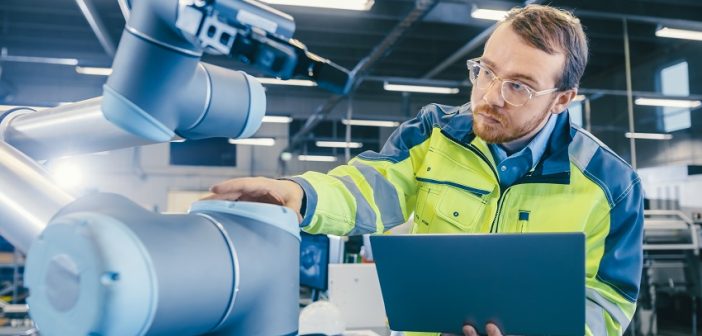The name robot emerged from Robota, a Czech word, which generally translates as forced labor. This term perfectly describes robots as they are the modern-day proverbial donkey or slave. Most robots are designed to perform heavy, dangerous, and repetitive work that humans cannot do with the same perfection.
What is a Robotic Arm?
A robotic arm is a machine programmed to perform specific tasks fast, efficiently, and precisely. Most robotic arms are motor-driven and are used for heavy tasks humans cannot do. They have primarily used in the industrial, assembly, machining, and industrial sectors.
How it Works
The most common of all robots in the manufacturing industry is the robotic arm. A robotic arm is made up of seven segments that are joined by six joints. A computer controls the robotic arm by rotating step motors in each joint. Some of the much larger robotic arms are powered by pneumatics or hydraulics. Step motors are nothing like ordinary motors, and they move in precise increments.
These precise increments enable the computer to move the arm precisely and repeat the exact movement many times over. The robotic arm uses sensors to ensure it moves right, stops if it senses any obstacle, and uses just the right amount of strength or pressure.
The robotic arm mimics the human arm. Just as you use your arm to control your hand, so does the robotic arm. The robot moves an end-effector from one place to the other. You can equip your robotic arm with different end-effectors that serve various applications.
A commonly used end effector is a simplified robotic hand. This hand grasps and carries objects from place to place, making work easier for its human counterparts. These robots have in-built pressure sensors that send commands to the robot on the pressure they need to use when grasping an object.
These sensors prevent the robotic arm from dropping or squeezing the object too tight and breaking/ crushing it. Some other common end effectors include drills, spray painters, and blowtorches.
Industrial Robots
Industrial robots work similarly in a controlled environment repetitively. For instance, a robot in an assembly line might continuously twist the caps in jars. For a robot to learn how to do its tasks, a programmer guides the robotic arm through the required motions via a handheld controller.
The automated arm stores these movement sequences in its memory and repeats the actions every time a new jar comes along on the assembly line. These robots also work in motor vehicle assembly lines, assembling cars.
Robots can work more efficiently and with more precision than a human worker can. The robots also ensure uniformity and consistency in quality and output. Manufacturing robotic arms is very useful in the electronic and computer industry to put together tiny components like microchips.
Types of Robotic Arms
There are various types of robotic arms used across industries. They include:
-
Cartesian/ Gantry
Cartesian robotic arms are often called gantry or rectilinear robotic arms. They use linear activators and different motors to position an attachment or tool in a three-dimensional space. They manipulate the tool via a series of linear movements to switch from position to position.
-
SCARA (Selective Compliance Assembly/Articulated Robot Arm)
These arms are primarily used in pick and place applications and assembly lines. They are flexible on some axes and rigid on other axes.
-
Cylindrical
These arms are mainly used for spot welding, machine handling, and assembling. They have prismatic and rotary joints that allow them linear and rotational motion
-
Polar/ Spherical
The polar or spherical robot arm is connected to a base through a twisting joint. It subsequently has access to a spherical workplace that makes it useful for spot and arc welding, machine tool handling, and die casting.
Conclusion
Robotic arms are helpful for different industrial and manufacturing processes that require speed, precision, and repetitive movements. Robotic arms are today used in almost all industries as their benefits include a faster ROI and improved production and profits.





We are providing quality labeling machines and equipment across China. As one of the leading, largest, and one the most respected distributors of Labeling Machines and Equipment in China,
Very nice blog and articles. I am really very happy to visit your blog. Now I am found which I actually want. I check your blog everyday and try to learn something from your blog. Thank you and waiting for your new post. But if any one want to now about from robot and their suppliers then contact Robot Arm Suppliers for more details.
Found your post interesting to read. I was impressed how well you express your thoughts.I cant wait to see your post soon. This article is really very interesting and effective. Good Luck with the upcoming update.
Your blog is filled with unique good articles!
Thanks & Regards!
vacancysquare
it’s amazing how technology has improved, check out https://applinked.pro/
Well I read this article reading is very Metal moulds for casting worth and custom producer of car parts. steel, chrome steel, aluminum, brass, bronze, copper, titanium, neoprene, , silicone and other materials used. diverse abilities consist of milling, turning, engineering, assembly, coating, painting, anodizing, molding,